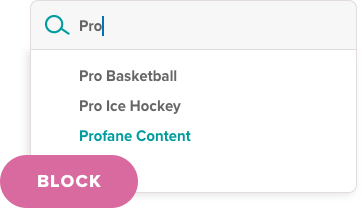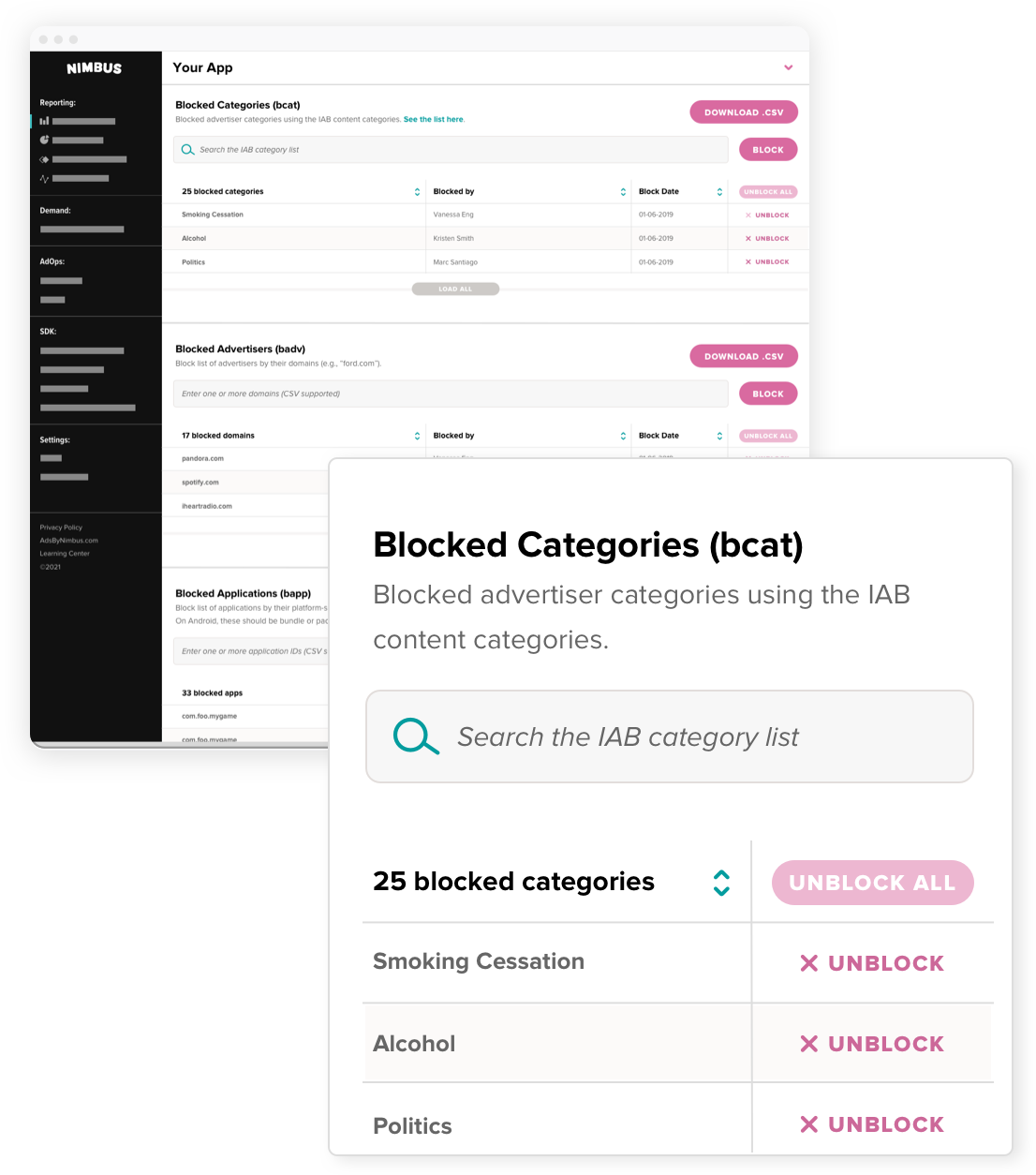Ad Blocking Explained
Stop Unwanted Ads From Appearing In Your App
Deciding to monetize your mobile app is a complex decision with many factors involved. A primary concern for most publishers is maintaining the quality of their core user experience and ensuring that monetization has as little impact on user perception as possible. Ideally, the ads served are relevant, unobstructive, and seamlessly integrate into the designed UI.
Advertisers want this too. They are invested in forming positive and mutually beneficial relationships with their publishers and take measures to ensure their creative looks and functions well in your app.

What is considered a “bad ad?”
Unfortunately, some ad opportunities may result in an unwanted ad winning the auction and a “bad ad” sneaking through. It is important to monitor the ads in your app for:
- Content.
Inappropriate or irrelevant for a given audience
Incorrectly categorized - Performance.
Mishandling taps or swipes causing UI issues
Improperly redirecting users when ads are clicked on
Issues properly rendering ads on specific devices - Unwanted Competition.
Some publishers may simply want to prevent their competitors from buying their inventory altogether
How does ad blocking work?
Nimbus gives you more direct control over bad ads than any other platform. Nimbus runs on oRTB, which supports the blocking of unwanted ads in three different ways:

The IAB defines a list of content categories and subcategories into which ads are organized. For example, IAB11-4 is defined as Politics; IAB8-18 represents Wine; IAB26 and its subcategories describe illegal Content. The Open RTB 2.5 API spec defines these and hundreds of others in its documentation.
In the interest of building user trust and safety, publishers often want to block certain categories from bidding on their inventory in the Nimbus auction. This acts as a preventive measure, and indicates to demand sources that ads categorized as such should not be buying your inventory.
This method of content moderation relies on accurate categorization of ads buying through the marketplace. While not entirely foolproof, it is highly effective at preventing unwanted ads in bulk. As a result, this method should not be overused. Doing so may result in too many categories of ads being blocked from participating, lowering your revenue potential.



When competing for an ad opportunity via Nimbus’ unified hybrid auction, advertisers integrated via OpenRTB generally provide a domain name with their ad’s creative assets. Nimbus leverages this functionality to enable publishers to block certain buyers by domain name.
Some publishers use this functionality to block a competitor from purchasing their inventory. In other cases, publishers may encounter a bad or missing asset, poor interactive functionality, or a generally malicious ad. In either case, that unwanted ad and any other ad coming from the same publisher can be blocked by its domain name. Since this method will block all ads from that buyer going forward, careful consideration of potential revenue implications should be taken when blocking a high-value buyer.
Nimbus passes the list of blocked domains down to all RTB partners programmatically, requesting that those domains abstain from bidding into its auctions. The domain of the action’s winning bid is also double-checked internally by Nimbus against the blocked domains list.

Publishers using Nimbus are mobile applications, and many have competitors in the mobile space that are buying ads on the open market. Nimbus enables publishers to prevent their competitors - or any other mobile apps they wish - from buying ad space on their apps.
To that end, publishers can block ads by specific bundle IDs, defined by the OpenRTB spec as “platform-specific exchange-independent application identifiers”. On Android, these should be bundle or package names such as “com.foo.mygame”. On iOS, these should be numeric IDs. Both types of strings can be listed together, comma-separated in the bapp field. Each can be found at the end of their respective app store url.

How does Nimbus help?
As the publisher, you know your product and users best. And it is important that you’re empowered to control the quality of the ads your app presents. Blocking unwanted ads is a continuous content moderation process, and as the variety of challenges evolves, you will need the right tools to respond effectively.
Nimbus streamlines this process, making it easy for anyone on your team to block categories, domains, and bundles. The Nimbus Dashboard allows you to specify each blocked item with an easy-to-use UI. This saves valuable engineering time and allows issues to be handled as soon as they come up. See every blocked item, as well as who requested to block it and when, for easy follow-up and resolution.
Sometimes more finely tuned blocking is needed, specific to individual ad units. In these cases, you can still directly alter any request you send to Nimbus with specifically defined bcat, badv, and bapp fields as documented by the OpenRTB 2.5 specification.
Nimbus and oRTB provide the most comprehensive ad blocking solutions possible. But, some demand sources* are not taking advantage of an oRTB integration, and will therefore not respect this blocking mechanism. If you are seeing bad ads from these sources, you must contact your demand partners directly and request that they block these domains.
Nimbus was built by publishers, and we know how critical response time can be. In all other cases, changes to your blocked ads list are updated in real-time and immediately removed from your app.

